When and how to properly transplant grapes to another place in the fall
Vine bushes are replanted in late fall or early spring when they are dormant. Plants transplanted in the fall take root better and wake up earlier in the spring.
You will find detailed information on how to transplant grapes to another place in autumn in this article.
The content of the article
Reasons for moving to a new location
The need for a transplant arises in several cases.
We list the most common reasons:
- the original location was chosen unsuccessfully - the grapes do not have enough sunlight, space for full growth, or it interferes with the growth of neighboring crops;
- the bush does not bear fruit;
- the planting plan on the site has changed;
- it's time to plant young seedlings growing too close to each other;
- transfer of the vineyard to another site.
The grapes tolerate transplants well and quickly take root in a new place, so both young plants and adult bushes are transplanted.
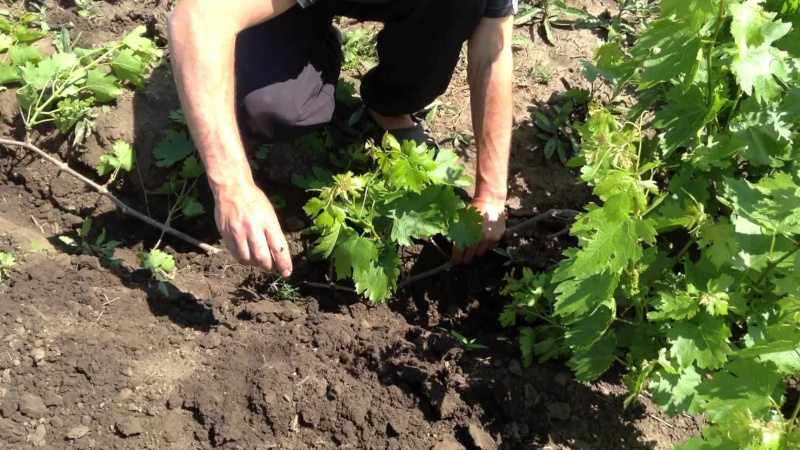
Transplant timing
The plant is transplanted after the leaves have fallen, when it falls asleep for the winter. At this time, the ground has not yet frozen, and the bush will have time to take root before winter arrives. The second option is in the spring, before the buds awaken. When determining the exact dates, they are guided by the weather conditions of the growing region.
Attention! The optimal time for transplanting is autumn (after leaf fall) and spring (before the buds awaken). At this time, the plant is dormant and painlessly undergoes transfer to a new place.
It happens that it becomes necessary to carry out a transplant in the summer, for example, when selling a plot. In this case, the bush is removed along with a large earthy lump and carefully transported.
Benefits of an autumn transplant
There are supporters of both autumn and spring planting. We list the benefits of planting in the fall:
- Growth processes are halted, and the soil is still warm enough for rooting, so minimal damage is done to the plant.
- In autumn, there is more choice of seedlings, they are of better quality than in spring. Seedlings are harvested at the end of the season and if the storage conditions are violated, their quality decreases by the spring.
- The soil is moistened by rain in the fall, which reduces the requirements for the frequency of watering.
- When grown in the south, the soil does not freeze in winter, and new roots will grow over the winter.
- Grapes planted in autumn wake up earlier in spring.
There is no definite answer to the question of when to transplant. The exact date is determined based on climatic conditionsth. The main thing is that the vine has enough time for rooting before the soil freezes.
Choosing a new location
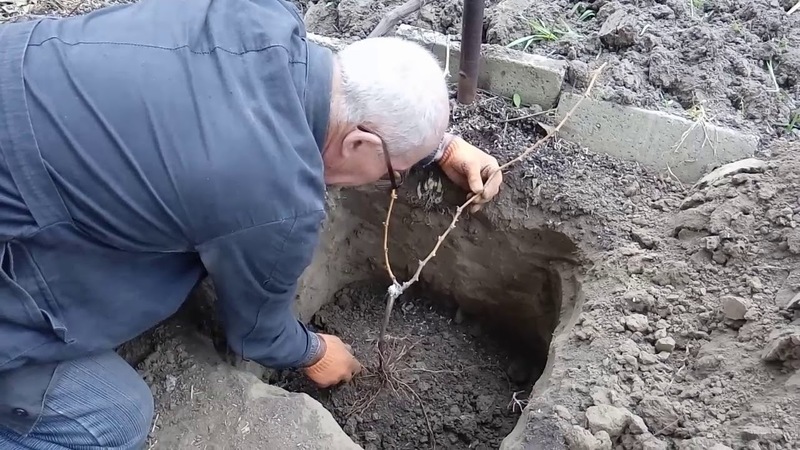
A site for vines is chosen on a gentle, for example, southern or southwestern slope. If the area is level, it should be sunny.
Late varieties are planted near the southern walls of buildings, at least 1 m away from them. When placed in several rows, planting is arranged from north to south.
Well-groomed grapes adorn the site. Landings can be placed along paths, on decorative supports or around a gazebo.
Council. Do not replace the old bush with grapes. The soil there is depleted, and if the bush was sick, the young seedling will also become infected.
When planning a vineyard, they think over how to protect it from cold winds, and make sure that rainwater does not flow from the roofs onto the vine - excess moisture is destructive for it.
Neighborhood rules
By choosing the right neighbors for your grapes, you will help it develop healthy.
Favorable
Rose bushes and vines are ideal neighbors. They have the same pests and diseases, but the rose gets sick first, and the gardener will have time to take action and protect the grapes.
Interesting fact! The tradition of planting roses next to grapes came from Europe. Thorny bushes were planted around the vineyards for protection from horses. Grazing animals, pricked by a thorny rose bush, turned back and did not trample the vineyards.
Basil, dill, sorrel, spinach, celandine, strawberries have a beneficial effect on the vine. Neighborhood with bulbous crops (hyacinths, daffodils, tulips) is acceptable.
Unfavorable
Unwanted neighbors - calendula, parsley, yarrow. These plants inhibit young seedlings and slow down their growth. The neighborhood with perennial colored peas and clary sage is harmful to grapes.
Selection of cuttings
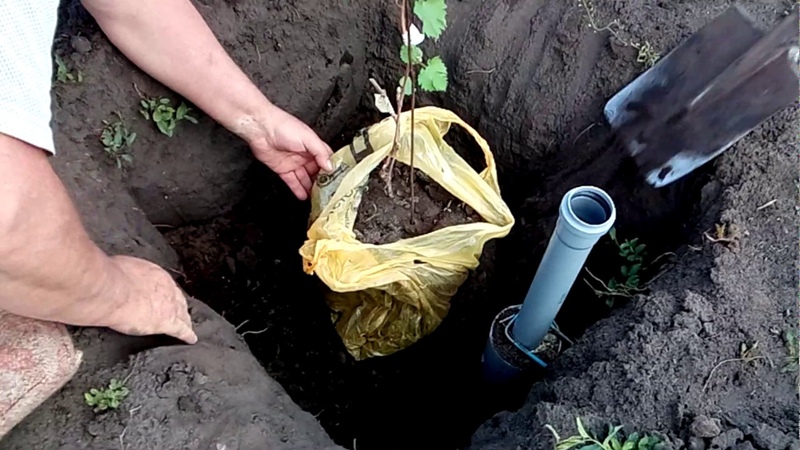
Cuttings are harvested in the fall, during trimming adult bushes. Use the middle and lower portions of healthy one-year-old shoots. They have a ripe bark of a dark yellow color and a thickness of about 1 cm.
Cuttings with 3-4 buds are cut with a sharp secateurs. The lower cut is made under the knot, and the upper cut in the middle of the internode. The length of each cutting is at least 60 cm. The stock in length will allow you to update the cuts in spring.
Cuttings are cleaned of foliage and shoots and tied in bunches. If there are many cuttings, the harvesting time and grape variety are noted on each bunch.
If the planting is planned in the fall, the cuttings are soaked and planted. If in the spring, store the planting material in a cool cellar or basement.
Training
Let's talk about preparing for transplanting an adult bush, young plant and cutting.
Mature bush
Preparation begins by cutting off excess vines. Two sleeves are left on the plant with 1-2-year-old vines on each. The tops of the vines are cut into 2-3 eyes. Sections are treated with RanNet paste or melted garden pitch.
Then the bush is dug around in a radius of 40-50 cm and an earthen lump with roots is removed. Watering before digging is not carried out - this will reduce root trauma and facilitate the extraction of the coma.
Bushes over 5-7 years old are freed from the ground by gently cleaning it off with a sharpened wooden stick. Healthy roots are pruned, old and diseased ones are removed completely.
Saplings
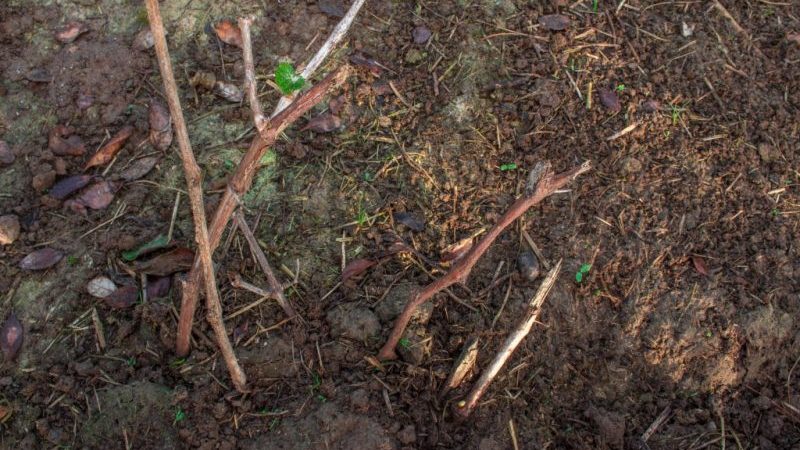
Young grape bushes are soaked in water for 24 hours before planting. In this case, the plant is immersed in water as a whole, and not only the roots. After the allotted time, the seedlings are removed from the water, the roots are cut by 2-3 cm and planted in the prepared holes.
Cuttings
Cuttings in front landing soaked in water for a day. Then the lower cut is dipped for a day in a container with a root stimulator.
Soil preparation
A pit in a new place is prepared in advance, 2-3 weeks before the expected disembarkation. During this time, the ground in the pit will settle, and the planted plant can be positioned at the desired height.
In the selected area, a cube-shaped hole is dug with sides of 80 cm. In this case, two separate heaps of earth are made. The top layer of soil (about 20 cm) is poured into one, and the rest of the soil is poured into the second.
The top layer is mixed with humus (1: 1), 1 kg of ash and 500 g of potassium-phosphorus fertilizers are added. From this mixture, make a pillow at the bottom of the pit 30 cm high and moisten it. After subsidence, the earth is filled up to the previous level and a small mound is made in the center.
A sapling or transplanted bush is placed on this mound and attached to a wooden peg. The roots are covered with the remaining soil from the first heap. The soil from the second heap is mixed with coarse sand and poured on top.
Transplant technology
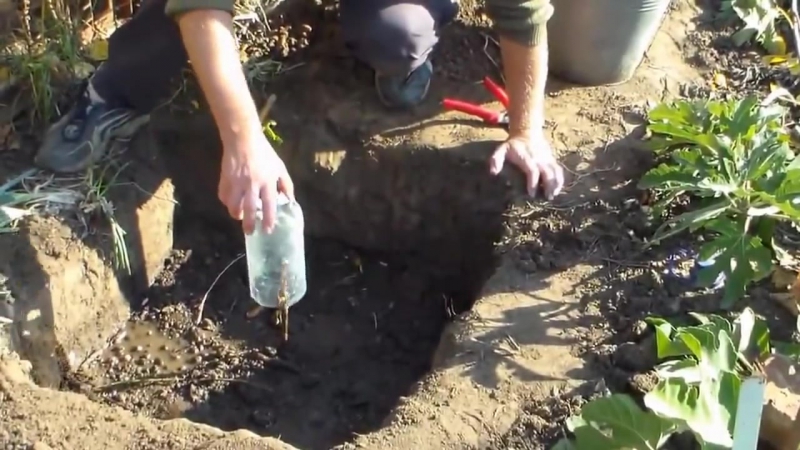
How to transplant grapes correctly so that the work is not wasted? First of all, the condition of the bush and its age are assessed. It makes no sense to move sick and old bushes to a new place.
Important! Only young bushes are transplanted.Plants older than 7-8 years old cannot be transferred to a new place, since there is a great risk that they will not take root or will get sick.
There are several options for transplanting grapes: transshipment with an earthen clod, transplanting a bush with bare roots and layering.
Together with an earthen lump
The option of transplanting a bush with a lump of earth into a larger pit is called transshipment. It is preferable for young bushes 1-3 years old. So that a lump of earth with roots does not fall apart, the plants are not watered for 1-2 days before transplanting and the roots are not shortened.
In place of the grubbed bush, the soil should rest for at least two years; it is not recommended to transplant grapes there. If you have to do this, you need to replace the soil in the old pit and plant a young bush in the center of it by transshipment.
With bare roots
This method is used for bushes over three years old. Their overgrown root system is difficult to remove along with a clod of earth and move to a new place.
The transplant procedure is as follows.
- First, the vines are cut, leaving two sleeves with two shoots on each. 3-4 buds are left on each of the shoots.
- The bush is dug in, the roots that go deep are pruned.
- The soil is cleaned from the roots, the ends of the roots are cut.
The grapes are then ready to be planted in a new hole. If everything is done correctly, the grapes will recover in the next season, and will begin to bear fruit in a year.
Layering
If an old grape bush is moved close to its original place, it is not necessary to completely dig it out - it is better to grow a cut. This is a vegetative method of reproduction, when the shoots are rooted by digging into the ground, but not separated from the mother bush.... The nourishment of the shoots on the cut occurs not only at the expense of their own roots, but also at the expense of the mother plant.
If the bush does not have such a long vine to bring its end to the right place, the layering is repeated or the vine is lengthened by grafting a cutting of the required length. Conversely, if necessary, reduce the length of the cut, bending around the vine around the trunk.
Transplanting by layering is used to fill free space or replace a dead plant... The main advantages of this method are the simplicity and the entry of the bush into fruiting the next year.
After two years, the layers are separated from the mother plant. If desired, they can not be separated and over time you can get a whole series of bushes with a central root system.
Post-transplant care
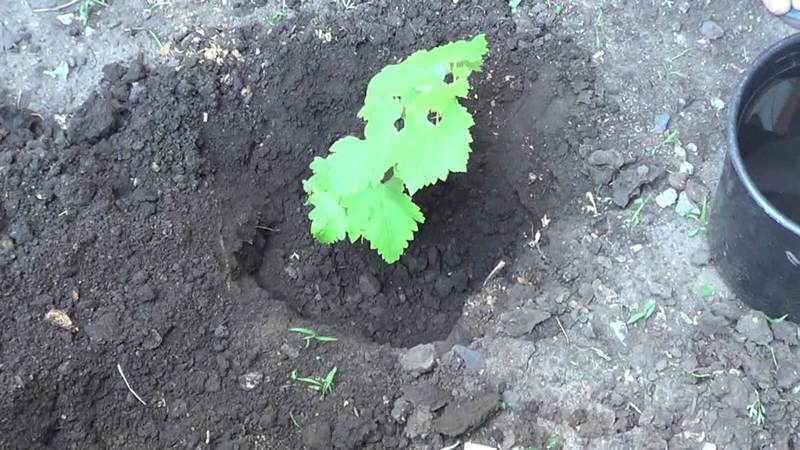
The first thing to do after transplanting is to moisten the soil. The plant needs water for fast rooting and successful wintering.
Need to know! Wet ground freezes less in cold weather. Abundant watering of the vines before sheltering for the winter will prevent the root system from freezing.
Moisture-saturated vine wakes up earlier in the spring and begins to grow. Watering is stopped after sheltering the bushes for the winter.
When watering, take into account the soil composition. If the soil is sandy, you will need about 50-60 liters of water for each adult bush. If it is black earth or loam - 25-30 liters. For seedlings, the rate is halved.
To protect against diseases and pests, the transplanted plants are sprayed with a 1% solution of Bordeaux liquid.
IN feeding grapes transplanted in autumn do not need - fertilizers have already been applied when preparing the planting pit.
The final stage of autumn care for transplanted plants is a shelter for the winter.
Attention! The grapes are covered when the temperature is stable below zero during the day (from 0 to -3 ° C).
When grown in the Krasnodar Territory (in the Kuban), cover grapes for the winter not necessary. But, for example, in the Rostov, Astrakhan or Volgograd regions this procedure is indispensable. Despite the fact that the average winter temperature in these regions does not drop below -15 ° C, sudden temperature changes and thaws are not uncommon here. A slight frost after a thaw is enough to destroy all the buds.
The nuances of transplanting depending on the region of cultivation
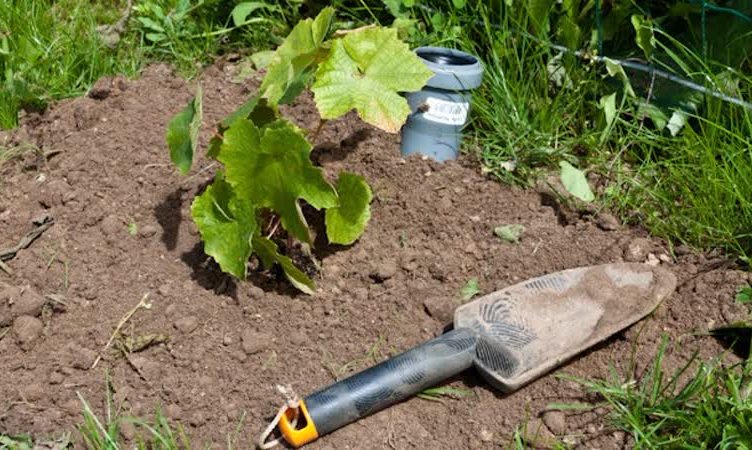
When determining the timing of transplanting a grape bush, the climatic characteristics of the region of cultivation are taken into account.
In the southern regions, early spring warming is often replaced by a sharp cold snap. Therefore, it is difficult to choose the right time for the transplant. In such conditions, it is preferable to replant in the fall.
When planting in autumn, it is important to choose the right moment. Vine growth slows down when the soil temperature drops to + 8 ° C. But this temperature is enough for the rooting of the seedling before the arrival of cold weather.
Conclusion
Caring for grapes is not an easy task. From time to time, the vines have to be replanted. Think in advance where and how you will move the plant, prepare the place. A competently carried out autumn transplant will allow the grapes to take root quickly and start bearing fruit earlier.